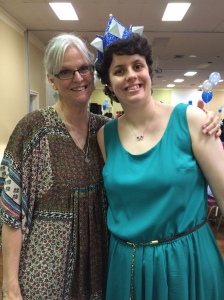Introducing Intern Brian Anderson
My name is Brian Barry Anderson, but those close to me call me Bri. I’m 24 years old and not too long ago I became a permanent resident of Florida. I was born and raised in Connecticut but moved down here for a better life. I don’t have a house yet, but I’m currently renting in Lithia while I look for a new home.
When I was at the age of 2, I was diagnosed with high functioning autism (some call it Asperger’s, though last I heard that’s an outdated term for it) and this mental disability prevented me from being able to read until I was 14 years old. Ever since then, I’ve loved reading novels and I consider myself a bookworm! Though I like to read books that I choose to read or pick out on my own and not books that I’m told to read. Other than reading novels, I love to draw and I’m very good at it. I like to make art on my iPad, and I usually draw dinosaurs, landscapes, and my own fictional characters. I’ve been drawing ever since I was 3.
I am currently attending The Learning Academy at USF. This is a program for adults on the autism spectrum to learn about themselves and work on employment skills. This semester I am participating in an internship with CARD-USF to write content for their blog. Before I came to the Learning Academy, I did attend a school program similar to this that assigns you to an internship. So, I was no stranger with this kind of program.
My experience here at the Learning Academy has been good so far. I have a very competent teacher, a manageable schedule, and a supportive mentor to help me with certain tasks assigned to us. The homework at times can be a little stressful, but that’s nothing new because I get anxious about homework regardless where I get it from.
So far during my time at the academy, I’ve been learning about how disabled people find work, how famous people with disabilities found success in life, making PowerPoint presentations about myself, and what working preferences we would like to have in a job. Before graduation, I hope to have a little more clarity on how to achieve my personal goals while having a suitable job where I don’t feel stressed or overwhelmed.
My ultimate hope and dream is to be a graphic novelist/illustrator and an author who specializes in fiction. My goal after graduation is to get much better at balancing a working job while having the energy to commit to practicing my creative writing. I also hope to find a good place to work at that meets with most of my working preferences to be able to thrive and keep me receiving some profit while I develop my creative projects. I might also attend some creative writing courses at the university while I’m at Lithia too.
Stay tuned for more articles this semester from myself!
- Brian

